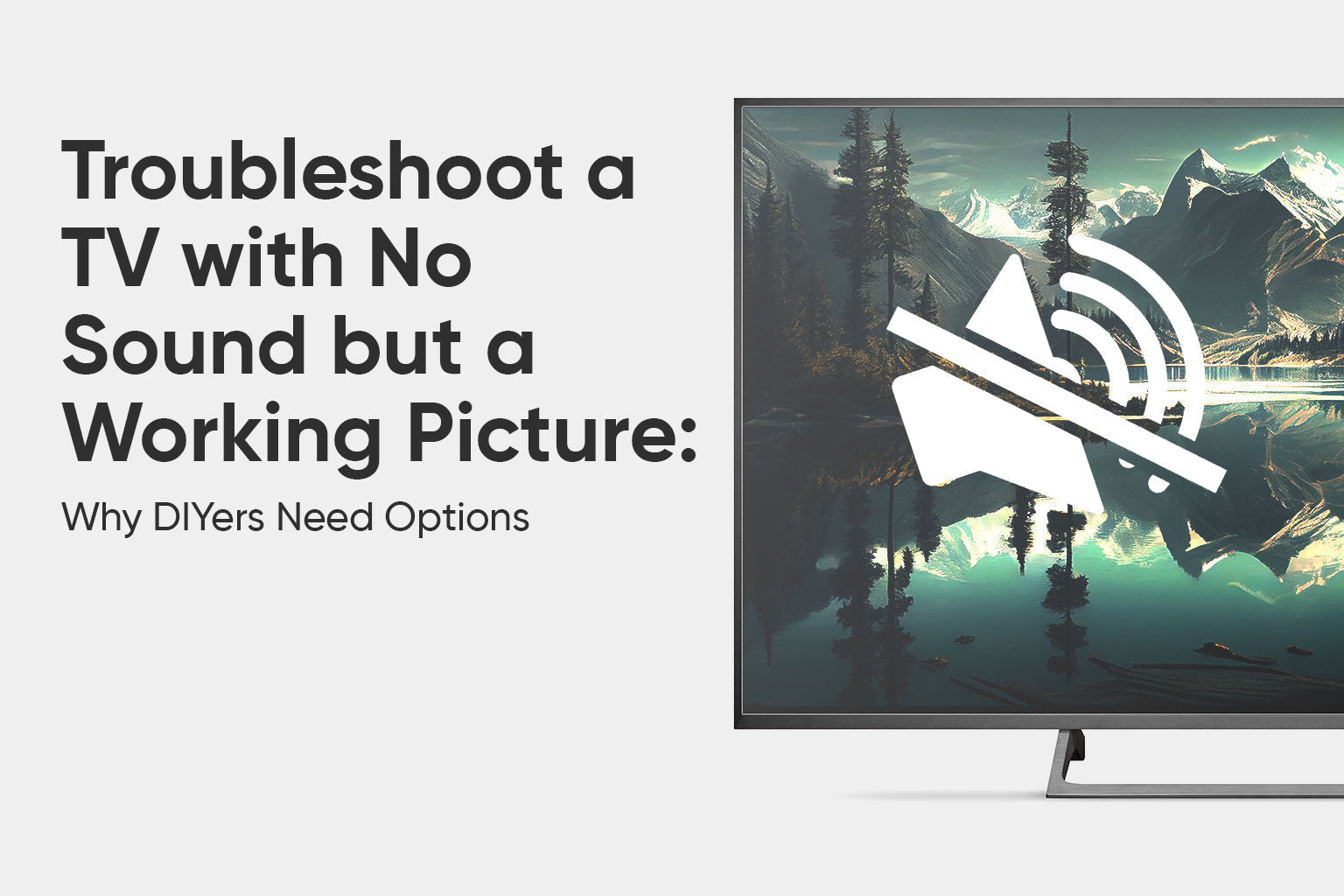So your TV shows a clear picture but refuses to speak? Don’t worry - this issue is often fixable with the right approach. Let’s walk through a complete troubleshooting checklist to get your audio back.
Would you rather watch a video? Check out our helpful YouTube video, showcasing a LG main board swap to resolve no audio:
1. Check Volume and Mute Settings First
This might sound basic, but it’s worth checking:
- Ensure the TV volume is turned up using both the remote and the TV’s physical buttons.
- Look for a mute icon on the screen. If it’s there, unmute the TV.
- Try increasing the volume while watching live TV, streaming content, or a DVD/Blu-ray - just in case it’s content-specific.
2. Examine External Audio Devices
If you're using a:
- Soundbar
- AV Receiver
- Bluetooth speaker
Make sure:
- The device is powered on.
- It's set to the correct input/source (e.g., HDMI ARC, Optical In, AUX).
- The volume is up on the external device.
- You try disconnecting the external audio device completely to see if the TV speakers resume working.
TVpartsToday Tip: If the TV speakers work after disconnecting external audio gear, your issue might lie with the soundbar or its cables - not the TV.
3. Double-Check Audio Output Settings
Go into your TV’s settings menu (usually under Audio or Sound) and verify:
- Audio Output is set correctly. For internal sound, it should say “TV Speakers.”
- If using ARC or Optical, make sure the settings match the port in use.
- Try switching between audio modes like “PCM,” “Bitstream,” or “Auto” to see if one works.
4. Test Different Sources
The issue may be specific to a certain app or device:
- Try streaming from a different app (Netflix, YouTube, Hulu, etc.).
- Switch to another HDMI input (like a gaming console, streaming stick, or DVD player).
- Tune in to over-the-air channels if you have an antenna.
If sound works on one source but not another, your external device or app could be the problem - not the TV.
5. Inspect Your Cables
- Make sure all HDMI or audio cables are firmly connected and not visibly damaged.
- Try swapping out HDMI cables or using a different HDMI port.
- If using an optical cable, check for kinks, debris, or cracks in the fiber.
Bonus Tip: HDMI cables can sometimes carry audio but not video, or vice versa. A new, high-speed cable might fix the issue altogether.
6. Power Cycle the TV
Sometimes a simple reboot can fix internal glitches:
- Turn the TV off.
- Unplug it from the wall.
- Wait 30–60 seconds.
- Plug it back in and power on.
This resets temporary software issues and clears out any lingering bugs.
7. Update the TV’s Firmware
Outdated software can cause a variety of audio glitches:
- Go to your TV’s System > Software Update section.
- Connect to Wi-Fi and install any available updates.
- After updating, reboot the TV.
This is especially useful for smart TVs or models that rely on apps and HDMI-CEC for audio control.
8. Perform a Factory Reset (If Necessary)
As a last resort, you can try resetting your TV to factory defaults:
- This erases all personal settings and app logins.
- Check your Settings > System > Reset > Factory Reset (may vary by brand).
Only do this if all other steps fail - but it can solve deep system issues that block audio functionality.
When It's a Hardware Problem: Main Board & T-Con Board Insights
If none of the software or setup fixes bring back your sound, it’s time to consider a hardware issue - especially in older or heavily used TVs. Two critical components may be responsible:
Main Board (Motherboard)
The main board is the hub that processes everything: video, audio, HDMI inputs, and communication with other boards.
Signs it may be failing:
- TV shows picture but has no audio from any source.
- TV doesn’t respond correctly to remote commands.
- HDMI devices are connected but no sound is passed through.
- Internal speakers and external audio both fail.
Solution:
Replacing the main board is often the fix. You’ll need the exact model number and part number to match a replacement - these are usually printed on the board or found on the sticker inside the TV.
T-Con Board (Timing Control Board)
The T-Con board controls the timing and quality of the image - not the audio itself - but it works closely with the main board.
While a bad T-Con board rarely causes sound loss, a failing one can:
- Create confusion with audio/video sync, leading to muted playback.
- Send incomplete or corrupted data to the screen, interfering with audio routing in rare cases.
TVpartsToday Tip:
If your TV had flickering, weird lines, or delayed video before losing sound, the T-Con board might be contributing to the problem. In most sound-related cases though, the main board is the more likely culprit.
Ready to Replace a Board?
You can find replacement main boards, T-Con boards, and more on our website! Just enter your TV brand and model number, and we’ll help you find the exact parts you need for a smooth DIY fix.
Need Help?
If you’re still unsure about the issue or need to replace a part, reach out to TVpartsToday. We can help you identify the exact cause of the problem and provide the right replacement part!
Would you rather watch a video? Check out our helpful Troubleshooting 101 playlist over on YouTube!
Would you rather chat with a seasoned repair expert? Head on over to our TVRepairHelp subReddit!
Need help finding the right board or part?
Call us at 930-212-1975 or browse our inventory online.
DIY-friendly parts, fast shipping, and expert support – only at TVpartsToday.

